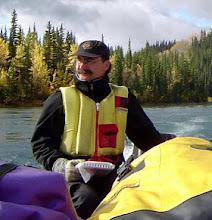 |
| Dave Rogers included a visit to his hapu's Owae Marae - Manukorihi Pā at Waitata, Taranaki. |
I met Dave Rogers, the Taranaki Area program manager for the New Zealand Department of Conservation (DoC) visitor services/historic sites, for a two day tour of his responsibilities. Dave also contributes personal time to assisting in the governance of his Te Atiawa Iwi. In our conversations Dave was passionate about the value of DoC's work. Especially important for him was the opportunity to have a Maori voice present in both DoC's strategic planning and the guidance of the front line face of parks in meeting community people.
 |
| The Marae buildings date back to the early 20th century and remain important elements of Dave's community. |
Dave has worked for DoC for more than three decades, starting as labourer, but working his way upwards taking on more responsibility in order to help shape the organization with his Maori perspective. He also took on voluntary work for other iwi,who he is also affiliated with, contributing to the preparation of their claim for redress against the Crown through the
Waitangi Tribunal. These parallel duties demanded much from him, and his family, not unlike the sacrifices made by many Yukon First Nation individuals and families engaged in the negotiation of their Umbrella Final Agreement with Canada at the same time. My time with Dave was enriched by his overlapping work histories.
 |
| Myself and Dave at the top of Te Kōru Pā overlooking the river which bends around the pā. |
The history of Taranaki is difficult. The region was the main area of Maori-Pakeha (white settlers) conflict through the 19
th century. Dave is troubled by the historical amnesia exhibited about these colonial wars by many New Zealanders. He is annoyed by the lack of remembrance of the confiscation of Maori lands in Taranaki and Waikato and especially insensed when these conflicts are referred to as the Maori Wars. “Maori Wars! They're not our wars, they attacked us.” The general ignorance of the fighting and land confiscations in Taranaki and Whanganui, and the consequent destruction of Maori communities in the region through the resulting scattering of their people by political exile to and incarceration in the South Island and as economic refugees following the seizure of their lands have been hard on his community. “We have more of our Iwi in Australia than in Taranaki.” This dispersion also led to their loss of both the Maori language and the knowledge of land skills. Dave makes an explicit connection between language retention and the continuing practice of the traditional arts of weaving and carving.
 |
| Te Kōru Pā is unique in the extraordinary stone work building up the natural character of the site. Vegetation threatens to gradually pull it apart and DoC staff work strategically to control the damage. |
Our first visit was to the Te K
ōru P
ā where a DoC work crew was cutting back vegetation, ensuring the site was accessible and visible for visitors. Dave finds the site a challenge. In spite of the interesting history and character of the site, it has few visitors. He has been working with the Taranaki Iwi connected to the Pā but they have been careful, a little wary, of engaging with DoC. Dave understands this may be connected to the preparation of their submission of claims against the Crown through the Waitangi Tribunal. The pā was a fascinating place. It spirals up a steep hill with different levels devoted to gardens, a fortified entry and supporting bastions, the Marae - the social and sacred centre of the community, food storage caves and access to the river. Dave walks me through the site describing each area's function through the history of the site from the mid-14
th century to its abandonment after being stormed by elements of the Te Atiawa Iwi in the early 1800s. Dave has questions about what to show visitors, how to preserve the important features from vegetation growth and possible increased visitor use. He encourages, and waits, for a time when the
Taranaki Iwi is interested in taking the lead on answering these questions, perhaps even owning the site.
 |
| Mahsi cho for the great visit Dave. |
In the evening I return to the coast to revisit the site of a Pakeha (white settler) redoubt built in 1880 to guard their coast road and the iron lighthouse, both constructed as symbols of their expanding control over Maori lands. It is an unhappy history beautifully detailed in Rebecca Buchanan's recent book,
The Parihaka Album: Lest We Forget
 |
| Mount Taranaki overlooks the cast iron light house at Cape Egmont. |












Glad to know you took time out to explore a region sacred to me and that you got to do it with a choice guy like Dave a Maori man with a lot of aroha.
ReplyDeleteBernie M
Taiwan
Mahsi Bernie,
DeleteIt was humbling to witness the hard work Taranaki region Iwi are doing to be themselves in their lands.